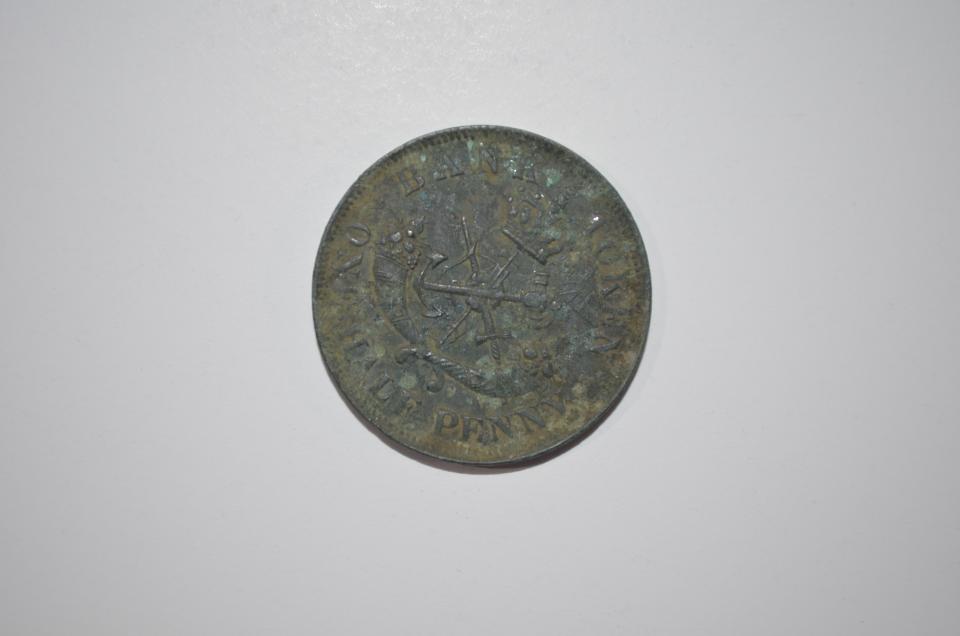
An 1854 Bank of Upper Canada coin. The obverse features the inscription “BANK OF UPPER CANANA//1854” with the image of St. George slaying a dragon. The reverse features the inscription “BANK TOKEN//ONE HALF-PENNY" with the Upper Canada coat of arms in the middle.
This coin was found during an archaeological excavation of Kingston's Market Square in the early 2000s. The Market Square lies on the west side of City Hall, bounded by Brock Street to the north, King Street to the west and Market Street to the south. Originally the market extended south beyond Market Street (which did not exist until after 1845) to Clarence Street. The archaeological mitigation of the redevelopment of Market Square in Kingston revealed extensive archaeological deposits relating to life in the heart of an early 19th century Upper Canadian town. None of these archaeological deposits were excavated in their entirety and the majority of the archaeological deposits still exist, undisturbed, under the current surface of the Market Square. Kingston's public market is one of the oldest markets in Ontario, officially founded in 1801 it has operated as a community gathering space ever since.
The half penny coins arose from a shortage of small coins or smaller denominations when the Bank of Upper Canada was granted authority to strike copper coins in 1850. This led to the production of large quantities of pennies and half pennies. The first issue was struck in 1850 in the Royal Mint in London and arrived in Canada later in 1851. However, the half penny had many issues such as the production being more expensive than the denomination itself, not aesthetically pleasing, and the size of the coin. The size of the coin was a common complaint as the small size would often cause the coin to be easily lost or fall out of one’s pocket. It was later removed from circulation in around 1984.
